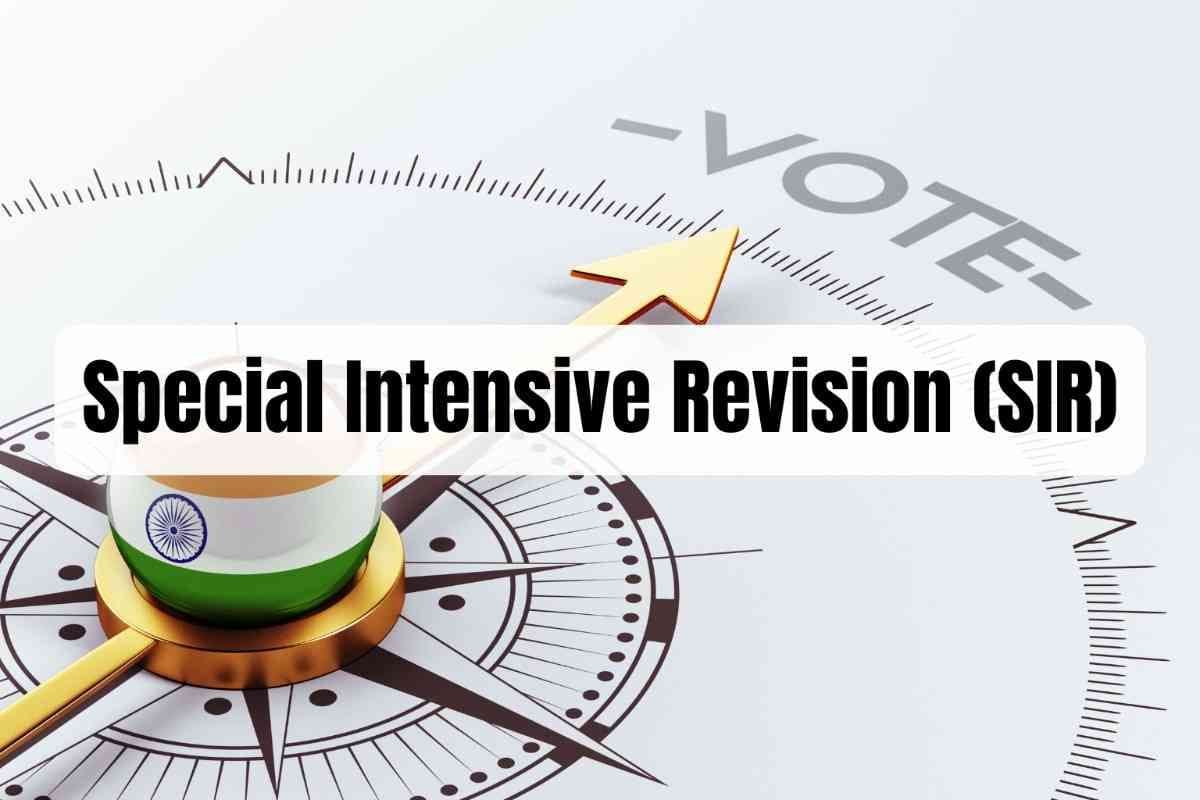International Day for Preventing the Exploitation of the Environment in War and Armed Conflict 2025
Nov, 2025
•4 min read
Why in the News?
Every year on November 6, the world observes the International Day for Preventing the Exploitation of the Environment in War and Armed Conflict. The 2025 theme, “Environment + Conflict = Peace Risk,” stresses the urgent need to protect nature and resources during war to ensure peace and sustainability.
Why Cover This Topic for UPSC?
- Important for current affairs in the news.
- Useful for Prelims (days, themes, reports, schemes).
- Adds value to Mains answers on conflict prevention, peace, and international environmental law.
- Potential topics for the Essay and Ethics themes.
- Connects to SDG 13 (Climate Action) and SDG 16 (Peace and Justice).
About
The International Day for Preventing the Exploitation of the Environment in War and Armed Conflict is a day dedicated to raising awareness of how wars and armed conflicts damage the environment. It is observed every year on November 6 to remind the world that protecting forests, water, soil, and wildlife is just as important as protecting people during conflicts.
The focus for International Day for Preventing the Exploitation of the Environment in War and Armed Conflict 2025 centres on Environment + Conflict = Peace Risk.
Key Facts About the Day:
- It was officially declared by the United Nations in 2001 to highlight environmental destruction caused by warfare.
- The day emphasises that sustainable peace cannot be achieved if natural resources sustaining livelihoods and ecosystems are destroyed.
- It recognises that environmental protection must be integral to conflict prevention, peacekeeping, and peacebuilding strategies.
- At least 40% of all internal conflicts over the past 60 years have been linked to the exploitation of natural resources like timber, diamonds, gold, oil, fertile land, and water.
Also read: Nobel Prize Highlights 2025
Historical Background: How the Day Came Into Being
Environmental protection during warfare became a pressing global concern following the devastating wars of the twentieth century that left lasting scars on nature.
- The Vietnam War (1961-1971) introduced widespread environmental destruction through herbicides like Agent Orange, which decimated forests and ecosystems, affecting generations of people.
- The Gulf War (1990-91) demonstrated large-scale environmental harm when retreating forces set oil wells ablaze, causing massive air and land pollution.
- The 2003 Iraq War and subsequent conflicts led to toxic chemical clouds observed in Mosul city that affected the landscape and civilian populations.
- On November 5, 2001, the United Nations General Assembly declared November 6 as the International Day for Preventing the Exploitation of the Environment in War and Armed Conflict through Resolution 56/4.
- In May 2016, the United Nations Environment Assembly adopted Resolution UNEP/EA.2/Res.15, recognising the vital role of healthy ecosystems and sustainable resource management in reducing armed conflict risks.
- The International Law Commission has developed the PERAC (Principles on Protection of the Environment in Relation to Armed Conflicts), adopted in 2022. It provides a comprehensive legal framework for environmental protection during all phases of conflict.
Also read: Quit India Movement Day 2025: 83rd Anniversary of August Kranti
Reinforcing Commitment: Recent International Actions
The international community has strengthened its commitment to protecting the environment during conflicts through multiple resolutions and legal frameworks in recent years.
- The 1977 Additional Protocol I to the Geneva Conventions prohibits warfare methods causing widespread, long-term, and severe environmental damage.
- The 1976 Convention on the Prohibition of Military or any other hostile use of Environmental Modification Techniques (ENMOD) bans weather warfare and deliberate environmental manipulation as weapons.
- The Rome Statute (1998) of the International Criminal Court recognises widespread, long-term, and severe environmental damage during international armed conflict as a war crime.
- The 2020 International Committee of the Red Cross Guidelines on Protection of the Natural Environment in Armed Conflict provide practical guidance for military personnel.
- In February 2024, the UN Environment Assembly adopted Resolution 6/12 on environmental assistance and recovery in conflict-affected areas, proposed by Ukraine based on its recent experience.
MCQ on Preventing the Exploitation of the Environment in War and Armed Conflict
QUESTION 1
Easy
Which international convention specifically bans the use of environmental modification techniques as a weapon of war?
Select an option to attempt
Significance of the Day: Why It Matters for Peace and Development
The day highlights that war and environmental damage are deeply linked, threatening peace, human security, and sustainable development.
- Highlights Environmental Victims: Wars damage nature as much as they hurt people, but environmental destruction often goes unnoticed. This day brings it into focus.
- Links Peace to the Environment: True peace is impossible if natural resources and ecosystems that people depend on are destroyed.
- Prevents Future Conflicts: Resource-driven conflicts are twice as likely to restart, making environmental protection critical for lasting stability.
- Reduces Humanitarian Crises: Environmental damage causes water pollution, crop failure, diseases, and displacement, creating long-term suffering beyond the war itself.
- Supports Global Development: The day strengthens commitment to Sustainable Development Goals by connecting environmental protection to peace, health, clean water, and community well-being.
- Builds International Teamwork: The day brings nations, organisations, and communities together to protect the environment and support recovery in conflict zones.
Current Environmental Impacts: Real-World Examples
Recent conflicts demonstrate the severity of environmental damage in war zones and its long-term consequences for communities and ecosystems.
1. Russia-Ukraine Conflict:
- Approximately 25% of Ukrainian territory is mined, making it impossible for agricultural activities and creating environmental hazards.
- The conflict has caused widespread water and air pollution, soil degradation, and biodiversity loss, compounding humanitarian crises.
- Military operations have led to toxic dust containing chrysotile asbestos in destroyed urban areas, causing long-term health risks, including cancers.
2. Gaza Conflict:
- Over 61 million tons of debris have been generated, contaminated with unexploded ordnance, asbestos, and hazardous substances.
- The collapse of sewage, wastewater, and solid waste management systems has caused a 65% diarrhoea cases among children under five compared to pre-conflict levels.
- The conflict has interrupted almost all environmental management systems while creating new environmental hazards.
3. Other Conflict Zones:
- In Afghanistan, deforestation reached critical levels with 95% of forest cover vanished in some areas.
- In Colombia and Congo, major biodiversity hotspots were removed, providing space for refugee camps and extremist groups.
- In Yemen and Gaza, water infrastructure, including pump stations, groundwater networks, and desalination plants, was severely damaged, causing public health risks.
UPSC Mains Practice Question
How does armed conflict lead to environmental exploitation, and why is protecting the environment crucial for lasting peace?
Evaluate Your Answers nowWay Forward
Protecting the environment during armed conflicts requires coordinated international action, legal accountability, and proactive measures at multiple levels.
- Ensure states follow international law frameworks like the Geneva Conventions, PERAC Principles, and ENMOD Convention, with strict penalties for environmental violations.
- Develop objective methods to measure and document environmental harm for recovery planning and reparations using UNEA-6 guidance.
- Designate ecologically important areas as demilitarised zones in peacetime to prevent irreversible damage to biodiversity and habitats.
- Fund post-conflict rehabilitation programs, including ecosystem restoration, water infrastructure rebuilding, and community assistance for sustainable recovery.
Unlock your UPSC success with SuperKalam! Get instant doubt clearance, customised study plans, unlimited MCQ practice, and fast Mains answer feedback.
Explore SuperKalam's Resources and set yourself on the path to success!
Crack UPSC with your Personal AI Mentor
An AI-powered ecosystem to learn, practice, and evaluate with discipline.
Download the SuperKalam App NowRelated Blogs
![Vijay Diwas 2025: Why 16 December is Celebrated [UPSC Current Affairs]](/_next/image?url=https%3A%2F%2Fblog-media.superkalam.com%2FVijay_Diwas_2631842d69.jpeg&w=3840&q=75)
Vijay Diwas 2025: Why 16 December is Celebrated [UPSC Current Affairs]
Dec, 2025
•6 min read

Special Intensive Revision (SIR) of Electoral Rolls: Definition, Objectives, Significance, & Challenges
Dec, 2025
•4 min read

UNICEF Day 2025: 79 Years of Global Commitment to Child Rights & Protection
Dec, 2025
•4 min read